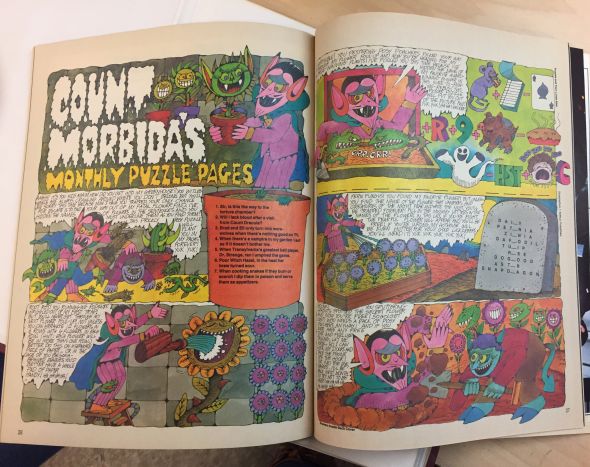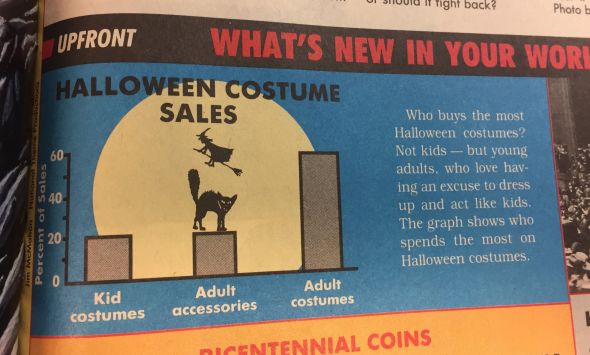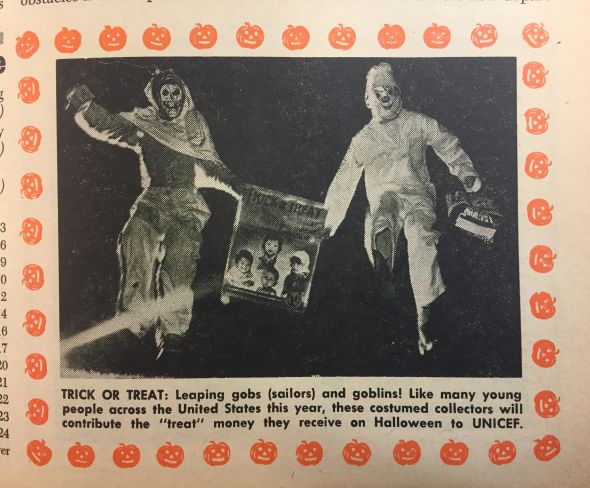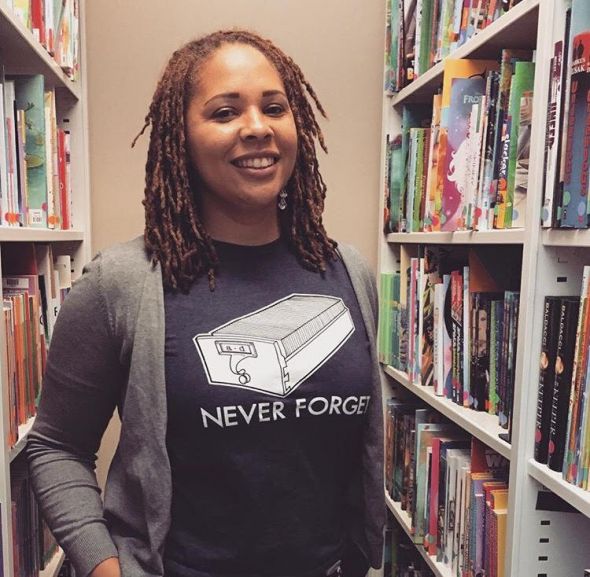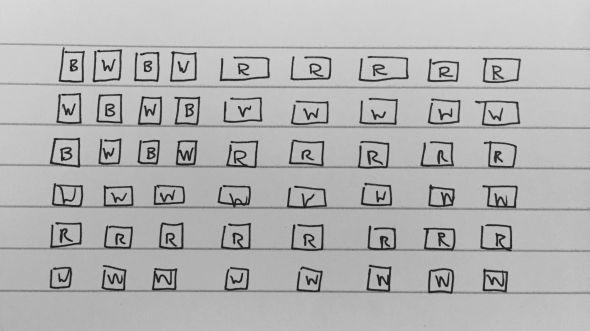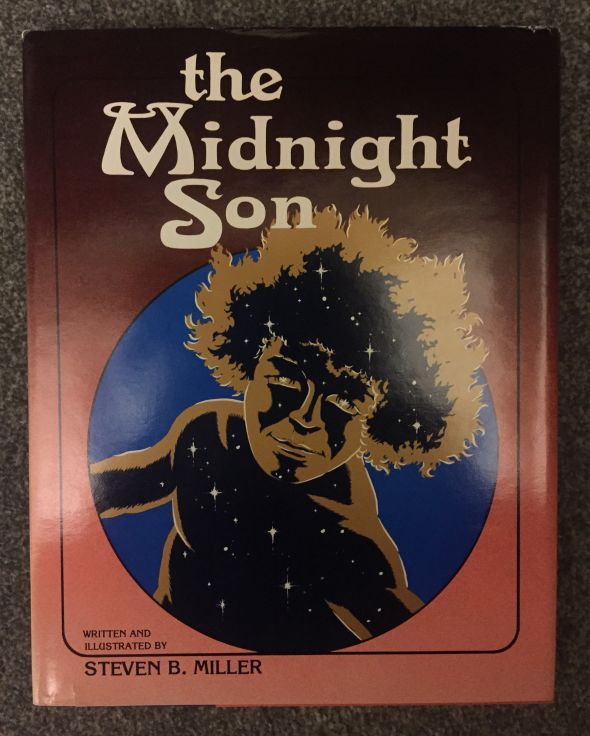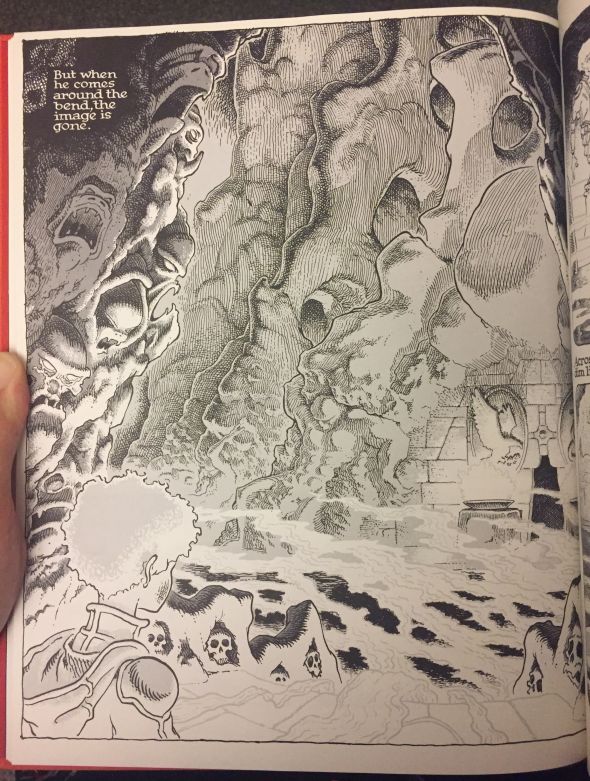Welcome to our Throwback Thursday series! After a short hiatus, we are back and just in time for summer... the Scholastic Summer Reading Challenge, that is!
The 2017 Challenge launched just last week, and kids have already read over 11 million minutes. This is the 11th year of the Challenge, and this year's theme is "Happy Camper: Take a Reading Adventure." I decided to use that theme as my inspiration, and today Deimosa and I headed down into the Archive to look for some vintage books about summer camp.
As we picked books off the shelves, a theme started to develop: summer camps are great settings for horror stories. Maybe it has to do with kids being away from home, away the safety mom and dad provide? Either way, most of the books we found were horror titles, with a few dramas, and one super cool photo-heavy book about space camp – all stories I would have loved to read as a kid.
According to the Kids & Family Reading Report: 6th Edition, 58% of kids love or like reading books for fun, and 89% of kids ages 6-17 agree, "My favorite books are the ones that I have picked out myself." What better place to read a scary story you've picked out yourself than under the covers at camp? That sounds perfect to me! (I wasn't super athletic, and would be way more interested in quiet indoor reading time than outdoor activities; are you surprised?)
Check out the books we found, along with their descriptions, below!
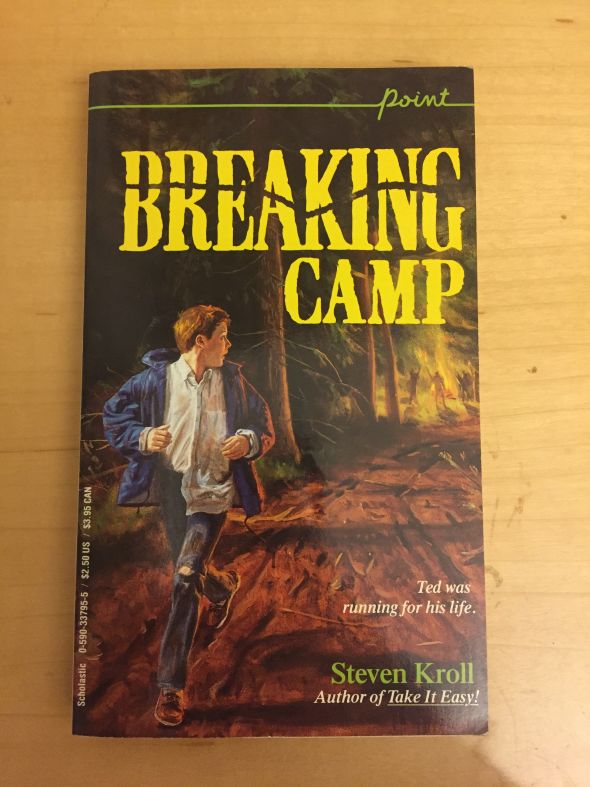
Breaking Camp by Steven Kroll (1985)
Ted had been warned on the train to Camp Cherokee that it was no country club. That was OK – he could use a summer of discipline and getting in shape. Besides it couldn't be that tough.
Camp is great at first. Everyone has his own horse to ride, and Ted even gets in with Jack, the most charismatic and powerful guy at Camp Cherokee. But when hazing begins, Ted sees a terrifying side to Jack. His imitation pranks are far more violent and cruel than they should be. Even worse, no one seems to protest – not even the counselors.
So when Ted decides he's going to try and stop the nightmare, he becomes Jack's next victim. And when Jack plays the game – there are no rules.
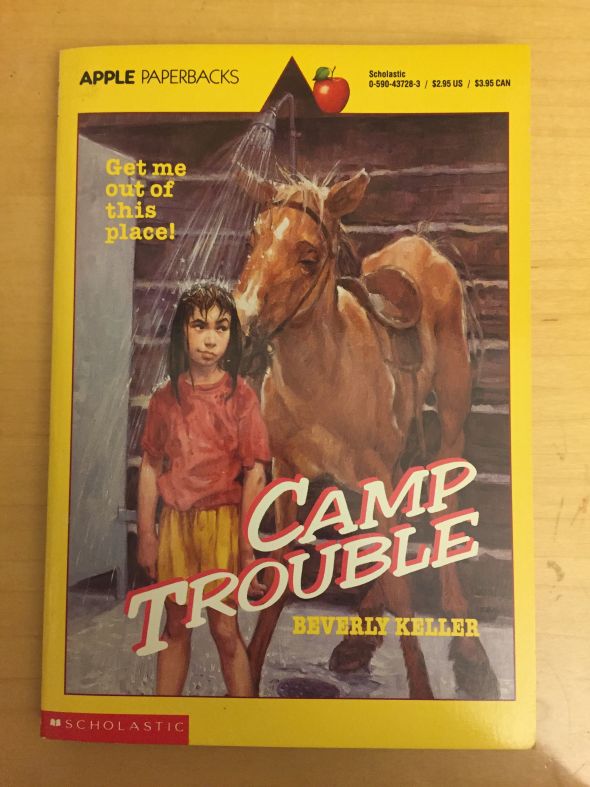
Camp Trouble by Beverly Keller (1993)
Camp Big Tree is not Phoebe's idea of a fun summer vacation. She sure the lake is filled with sharks and worry she'll get motion sickness from the horseback riding. The food is disgusting – potatoes baked in mud and a gooey Yummoo drink. And the counselors, you have special camp names like birchen sumac, or as warm and friendly as army drill sergeants.
With fancy riding gear instead of blue jeans and dainty flowered sheets instead of a sleeping bag, Phoebe just can't seem to fit in. Even her parents' care package is all wrong – filled with things like methanol-eucalyptus throat lozenges.
And then she has to ride a horse named Flash.
Whoever said things couldn't get any worse?
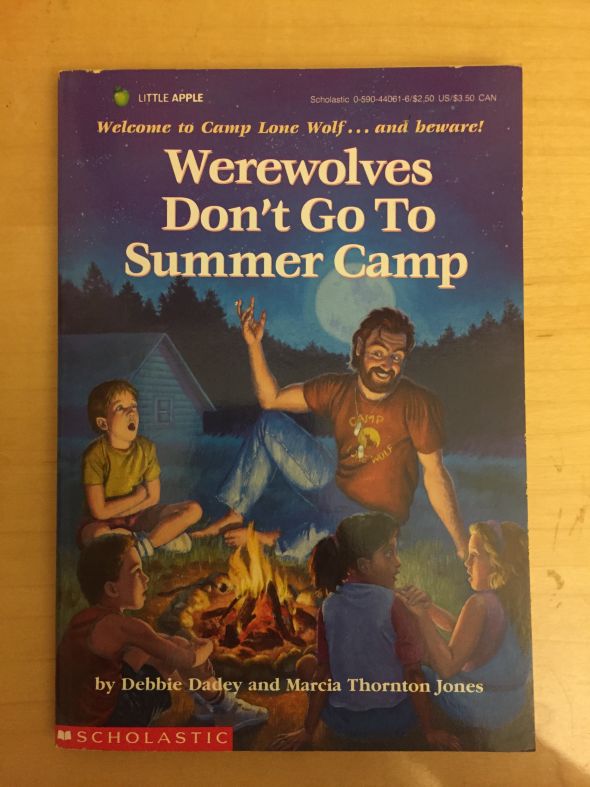
Werewolves Don't Go to Summer Camp by Debbie Dadey and Marcia Thronton Jones (1991)
There's never been a camp director like Mr. Jenkins.
"I think Mr. Jenkins is strange," Howie said.
Melody laughed. "He has more hair than a wolf in winter."
"Maybe he is a wolf," Liza giggled.
"Yeah, a werewolf," Eddie added. "I bet he is one and he comes out at midnight for a snack."
"Werewolves aren't for real," Liza said.
"Are they?"
Nobody thought summer camp would turn into while the wildest adventure!
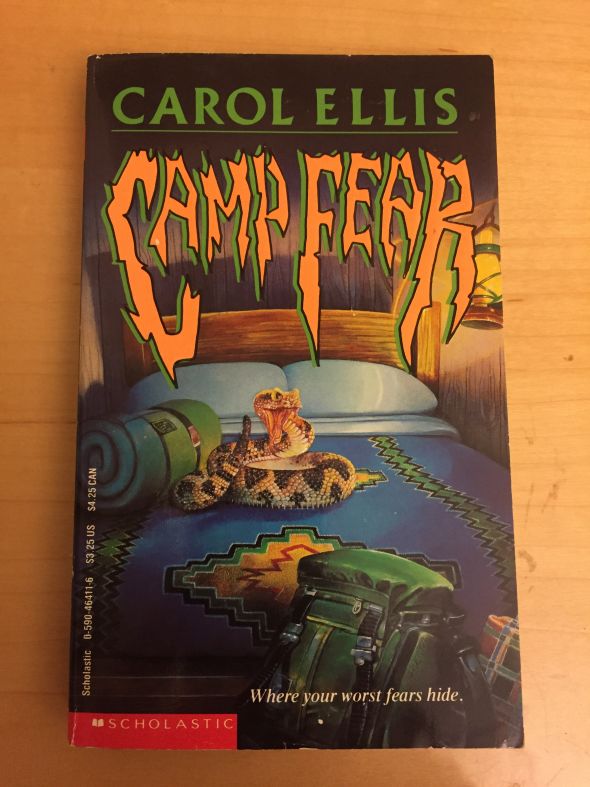
Camp Fear by Carol Ellis (1993)
The past can't hurt you. It can kill you.
Almost everyone at Camp Silverlake is afraid of something: bugs, snakes, swimming in the lake.
But there's a deeper, darker fear some of the counselor share. The fear that they're terrible secret will be discovered.
For seven years, they've kept it hidden - ever since that summer when they were campers together.
The summer one camper didn't make it home alive.
Now someone is using their secret – and their fears – to play a frightening game a vengeance.
A game that could turn deadly.
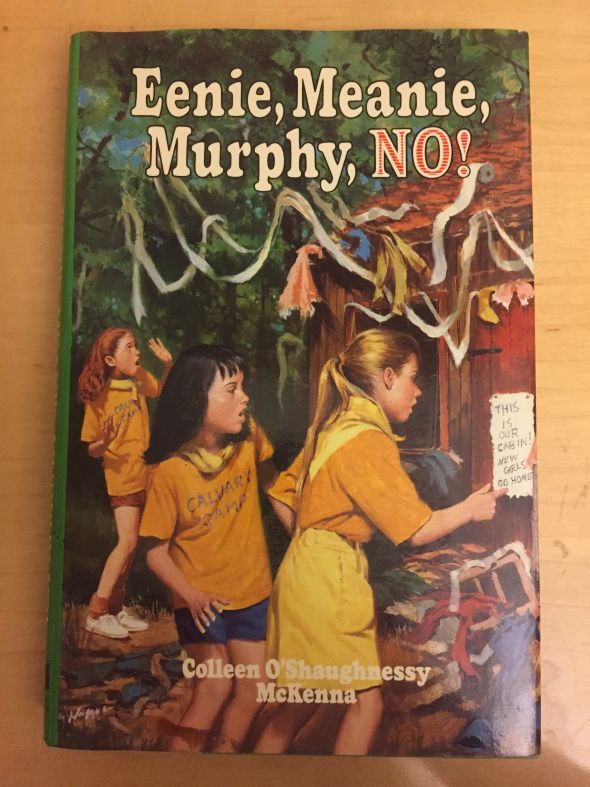
Eenie, Meanie, Murphy, NO! by Colleen O'Shaughnessy McKenna (1990)
Colette Murphy knows she is going to love camp. What could be better than all that freedom – freedom from her large and often overwhelming family? What could be better than sharing a cabin with her good friend Sarah and even with her bossy across-the-street neighbor, Marsha? What could be better than being at camp with such cute boys, especially one particular boy, named Tommy?
Then Colette meets big, mean Peally. Peally claims she had first dibs on the cabin that Colette and her friends got. Peally also claims she has first dibs on Tommy.
Peally is out to get Colette. When Colette discovers that her diary is missing, she knows Peally stole it. But she can't believe that pill he would actually read parts of it aloud to the entire camp!
How can Colette stop her from getting away with her nasty plans? Does Colette have the courage to face a bully and a liar, a true meanie, all by herself?
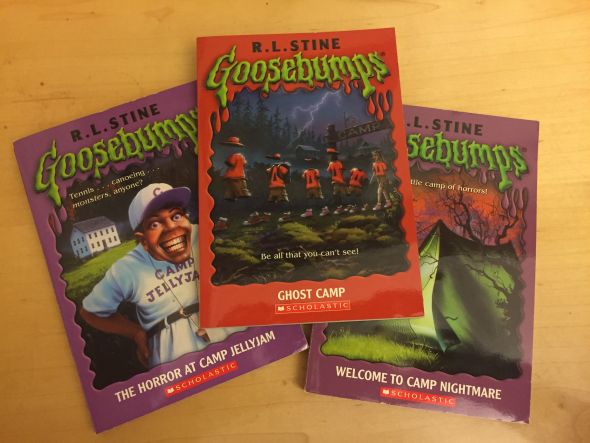
Goosebumps by R.L. Stine: The Horror at Camp Jellyjam (1995)
Swimming, basketball, archery. King Jellyjam's Sports Camp has it all. Too bad Wendy isn't a total sports freak like her brother, Elliot. But how excited can you get over a game of softball. It's just a game, right? WRONG! Because Camp Jellyjam is no ordinary sports camp. And Wendy's about to find out why. Why the counselors seem a little too happy. A little too obsessed with winning. And why the ground is always rumbling late at night...
Ghost Camp (1996)
The joke's on them! Harry and his brother, Alex, are dying to fit in at Camp Spirit Moon. But the camp has so many weird traditions. Like the goofy camp salute. The odd camp greeting. And the way the old campers love to play jokes on the new campers. Then the jokes start to get really serious. Really creepy. Really scary. First a girl sticks her arm in the campfire. Then a boy jams a pole through his foot. Still, they're just jokes... aren't they?
Welcome to Camp Nightmare (1993)
The food isn't great. The counselors are a little strange. And the camp director, Uncle Al, seems sort of demented. Okay, so Billy can handle all that. But then his fellow campers start to disappear. What's going on? Why won't his parents answer his letters? What's lurking out there after dark? Camp Nightmoon is turning into Camp Nightmare. For real. And Billy might be next...
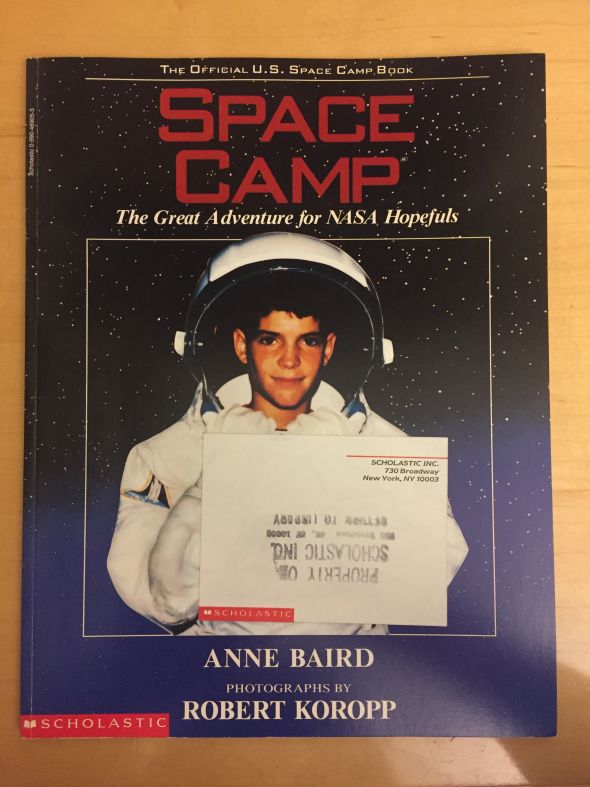
Space Camp: The Great Adventure for NASA Hopefuls by Anne Baird (1992)
The start of a NASA shuttle flight? The launching of a new satellite? No, the countdown to the most unforgettable space adventure on earth!
Each year, thousands of young people pour into the world famous U.S. Space Camp to find out what it takes, and feels like, to be a NASA-style astronaut. There they undergo a challenging, hands-on training program, based on the one used by NASA.
Space Camp lets you become part of this thrilling experience. A you-are-there-text, +50 dramatic, full-color photographs, follow a group of youngsters through their week-long training session. Learning firsthand from astronauts and other experts, the campers study rocket technology, practice with NASA training equipment that duplicates the weightlessness of outer space, explore a mock up of the proposed space station, and erect a moon base in Space Camp's Rocket Park. Finally, training complete, they don flight suits and blast offer an exciting simulated special mission modeled after actual NASA flights.
Exhilarating and informative, Space Camp is the perfect way to share this out of the world adventure.
Special thanks to Librarian Deimosa Webber-Bey for her ongoing help with this series!


